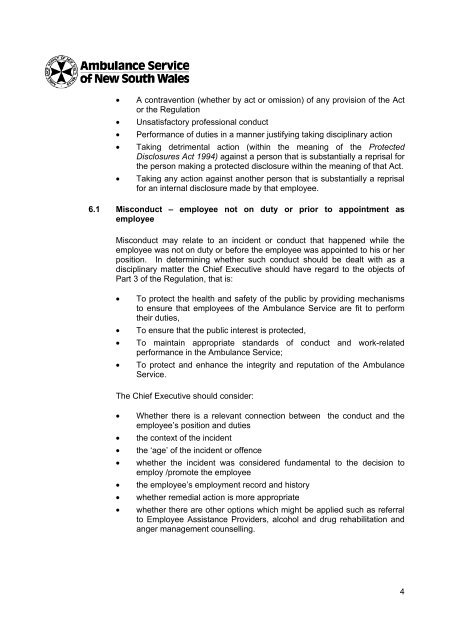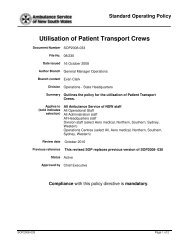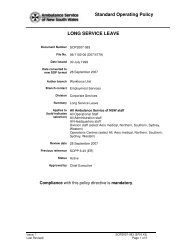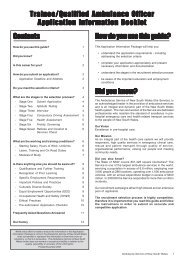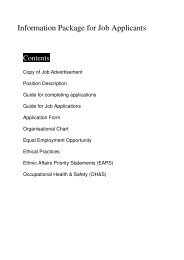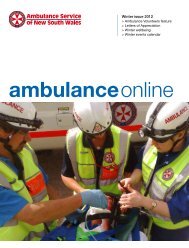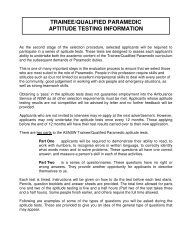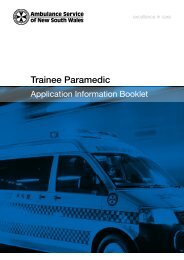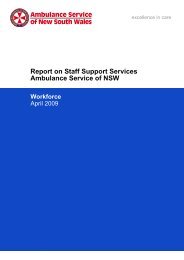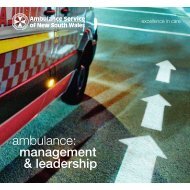Professional Conduct Guidelines - B. Misconduct, October 2006
Professional Conduct Guidelines - B. Misconduct, October 2006
Professional Conduct Guidelines - B. Misconduct, October 2006
You also want an ePaper? Increase the reach of your titles
YUMPU automatically turns print PDFs into web optimized ePapers that Google loves.
• A contravention (whether by act or omission) of any provision of the Act<br />
or the Regulation<br />
• Unsatisfactory professional conduct<br />
• Performance of duties in a manner justifying taking disciplinary action<br />
• Taking detrimental action (within the meaning of the Protected<br />
Disclosures Act 1994) against a person that is substantially a reprisal for<br />
the person making a protected disclosure within the meaning of that Act.<br />
• Taking any action against another person that is substantially a reprisal<br />
for an internal disclosure made by that employee.<br />
6.1 <strong>Misconduct</strong> – employee not on duty or prior to appointment as<br />
employee<br />
<strong>Misconduct</strong> may relate to an incident or conduct that happened while the<br />
employee was not on duty or before the employee was appointed to his or her<br />
position. In determining whether such conduct should be dealt with as a<br />
disciplinary matter the Chief Executive should have regard to the objects of<br />
Part 3 of the Regulation, that is:<br />
• To protect the health and safety of the public by providing mechanisms<br />
to ensure that employees of the Ambulance Service are fit to perform<br />
their duties,<br />
• To ensure that the public interest is protected,<br />
• To maintain appropriate standards of conduct and work-related<br />
performance in the Ambulance Service;<br />
• To protect and enhance the integrity and reputation of the Ambulance<br />
Service.<br />
The Chief Executive should consider:<br />
• Whether there is a relevant connection between the conduct and the<br />
employee’s position and duties<br />
• the context of the incident<br />
• the ‘age’ of the incident or offence<br />
• whether the incident was considered fundamental to the decision to<br />
employ /promote the employee<br />
• the employee’s employment record and history<br />
• whether remedial action is more appropriate<br />
• whether there are other options which might be applied such as referral<br />
to Employee Assistance Providers, alcohol and drug rehabilitation and<br />
anger management counselling.<br />
4


